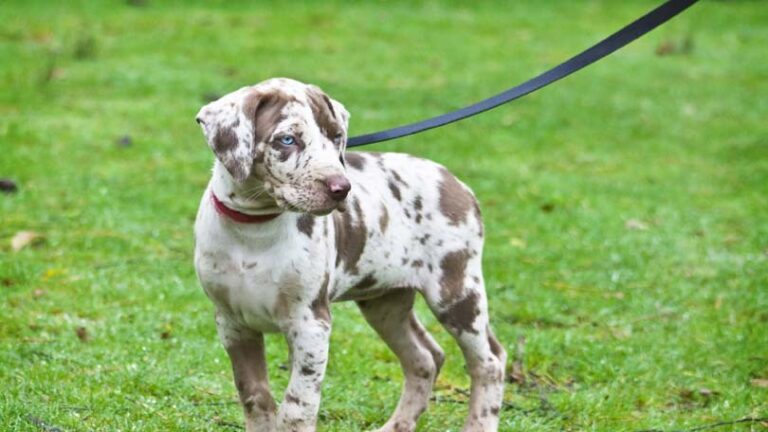Training a Purebred Puppy
If you have a purebred puppy you may be wondering if there are any differences in training between purebred puppies and crossbred puppies or mixes. After all, some dogs are bred for specific jobs such as hunting or herding, or guarding. When it comes to training a purebred puppy, is it different from training any other dog? Well, yes and no. Any dog trainer will tell you that every dog is different, but some breeds certainly have strengths in certain areas. You always need to work with your dog’s strengths. But in many ways, you can apply the same methods whether you have a purebred puppy or a mix because they are all dogs and have similar canine instincts. Here are some things to consider if you are working with a purebred.
Special considerations when working with purebreds
If you are working with a purebred puppy, it’s helpful to consider their breed and “group.” Dogs can be generally grouped by the kind of work they were originally bred to do. Nearly all dogs are affectionate with humans to a greater or lesser extent because of domestication and early socialization. Most puppies, purebred and mixed, have extensive contact with humans during their first weeks. They are petted and cuddled, played with, and they learn that people give them good things to eat. They are predisposed to like people and most dogs want to please us. This helps a great deal during training. But beyond these shared basic experiences, purebred dogs also have instincts which they have been bred for, in many cases for thousands of years. For instance, the Saluki can be traced back around 6000 years to the Arabian desert where he hunted rabbits and other game for bedouin tribes. And he still performs these duties today. As a result, Salukis are extremely intelligent, skilled hunters, as well as being fast and athletic. They can think for themselves because they have to make decisions on their own when in pursuit of their prey. But they are not always the easiest dogs to train or willing to follow every command because they are used to thinking for themselves. This is a good example of how you should consider the breed and a dog’s original purpose when training. If you are training a Saluki, or one of the other sighthounds, you can expect them to be distracted by moving objects or anything that might resemble moving prey (like a rabbit). If your dog gets up and leaves in the middle of a Sit or when you have told him to Lie Down, it’s probably because something has caught his eye. It’s very hard to teach the Come command to these breeds, especially off leash, because, because they have a tendency to go in pursuit of something more interesting and once they start running, they usually keep going. In addition, a 6-foot fence is no deterrent for a Saluki. Keep your sighthound on leash unless you are in an enclosed area where it is safe for dogs to run.
You can encounter similar issues with much smaller breeds such as the Beagle. In the case of the Beagle, they are a slave to their nose. The Beagle is a scenthound, as are American and English Foxhounds, Harriers, Bloodhounds, and others. The Beagle is a happy, adorable dog who makes a great pet, and Beagle puppies are very cute, but they were bred to hunt rabbits and other small game. Like the Saluki, the Beagle can think for himself in the field and he doesn’t always listen to commands. Beagles are not the easiest dogs to train. Their nose is always working and they can easily pick up scents that you can’t smell. If your Beagle smells something interesting, you can forget about training. He will be much more interested in finding the source of the scent. Food treats might lure him back since Beagles are usually very interested in food.
Some terriers can also pose training difficulties. As a group they are often hard-headed and stubborn, which are good qualities when you have to be brave and tough enough to battle vermin, foxes, and go underground to fight creatures with sharp teeth. But when it comes to training, these traits can cause problems. If you have a terrier, it’s important to find ways to motivate your dog.
If you have a mixed breed and you know he has a parent that is a Beagle or a terrier, or some other breed, you should take these things into consideration. Find out whatever you can about your dog’s parents and then learn as much as possible about those breeds so you can apply the information to your puppy’s training.
Working with your dog’s strengths
In some cases dogs can do things very easily because of their breed. If you have a Labrador Retriever or a Golden Retriever, for example, you probably won’t have to teach your puppy to retrieve. This is a natural ability in these breeds. Your puppy will probably bring you things all the time for you to throw for him. You just have to put a name to his action, like Fetch, so he knows what you want him to do.
If you have a breed that is naturally protective, such as a Doberman or a Rottweiler, you won’t have to teach them to be protective. However, it’s a good idea to make sure you can control them. Training is always a good idea for any puppy from a protection breed. In addition, it’s a good idea to make sure your puppy is well-socialized so he likes people. This will not diminish his protective instincts but you want your puppy to be well-behaved.

Having discovered a fondness for insects while pursuing her degree in Biology, Randi Jones was quite bugged to know that people usually dismissed these little creatures as “creepy-crawlies”.







